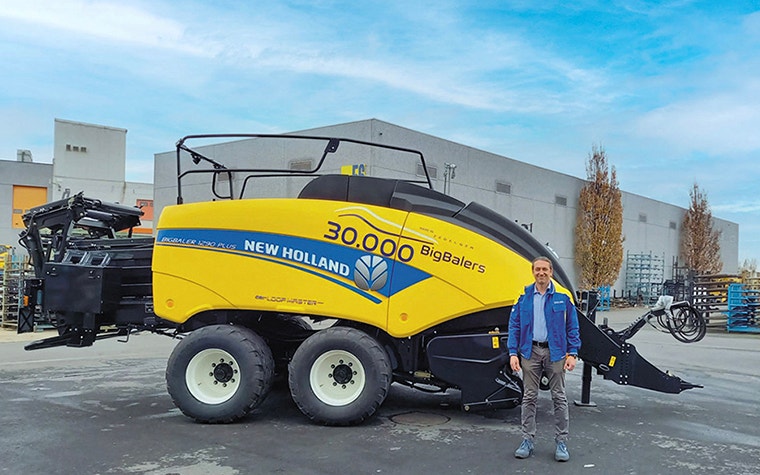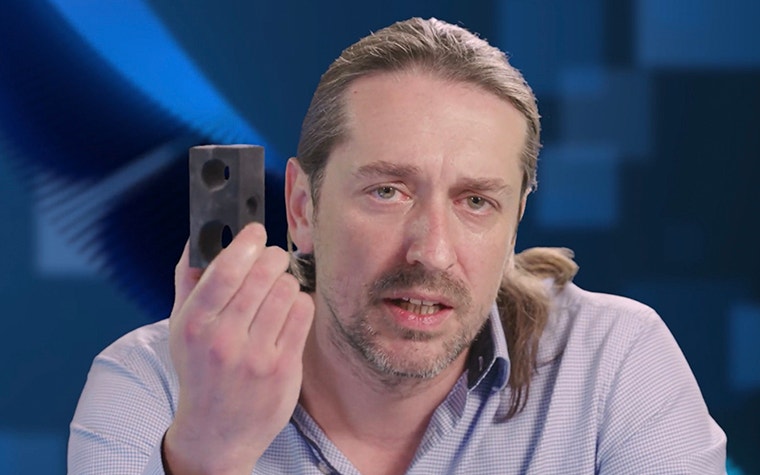CASE STUDY
How Additive Manufacturing Is Helping CNH Steer a Stronger Supply Chain Strategy

CNH Industrial is one of the world’s biggest capital goods manufacturers. The company’s 67 manufacturing facilities around the globe produce a wide range of products — from agricultural machinery and construction equipment to engines, commercial heavy goods vehicles, and even fire trucks.
As both an OEM and an aftermarket service provider with a need to continuously make, manage, and move hundreds of thousands of parts, the company has an extremely complex supply chain infrastructure to control. All while maintaining high levels of quality and customer support.
“It’s a complex puzzle, that’s for sure,” said Peter Ommeslag, Director and Industry 4.0 Global Program Lead for CNH Industrial. “One made even more challenging by the global pandemic.”
Thinking differently about additive manufacturing (AM) is helping the company navigate these evolving challenges. As well as helping the business avoid a potential €189,000 loss during the first COVID-19 wave, taking a strategic approach to AM has set CNH up to de-risk its supply chain and boost productivity moving forward.
From prototyping technique to spare parts strategy
“Additive manufacturing has featured in our business toolbox for more than ten years now, initially as an efficient prototyping solution,” explained Peter. “But we gradually began to see it had much bigger potential. For example, we started printing production tools — jigs, fixtures, maintenance parts, etc. — to support our manufacturing operations. Today, around 50% of our facilities make use of AM in this way. It’s been very successful for us.”


This success, coupled with a drive to innovate and continuously review its own processes, meant CNH’s AM story did not stop there. With an inventory of around 1.8 million different parts and a clear commitment to after-sales excellence, CNH started to look at how AM could be leveraged to enhance its spare parts strategy.
“We could see,” Peter continued, “that AM could significantly reduce the volume of physical inventory we needed to hold in stock without impacting part availability for customers. In fact, it could improve availability and therefore speed of service. Similarly, we could also see an opportunity for printing functional parts. It became very clear that with so many applications open to us, we needed to develop a more structured end-to-end AM strategy. So, in 2019 we began working with Materialise. In particular, the Mindware team.”
Safety, speed, and a €189,000 AM proof point
With the collaboration well underway, COVID-19 hit. As CNH Industrial’s Zedelgem Plant Director Luigi Neirynck explains, this had a major impact on the business.
“We had to quickly adapt, and AM really supported us with this. For example, with Materialise’s help, we printed hands-free door-opening devices as well as tools and components to make multi-person tasks possible and practical for a single person to complete in line with social distancing requirements. Additionally, we dedicated production resources towards printing PPE equipment for local hospitals and schools and even bought more 3D printers to make available to community innovators.”
However, it was a supply chain issue that really put the risk-mitigation value of AM in a clear perspective for CNH.


A problem with a small but vital clamping fixture occurred; however, COVID-19 restrictions meant that replacement parts could not be shipped by the Chinese manufacturer to the Zedelgem plant. CNH was left with three options.
- Build incomplete assemblies and rework them once the parts arrived, at a cost of more than €1,750 and with the risk of being too late to fulfill aftermarket customers’ orders;
- Stop assembly completely until the parts arrived, at a cost of approximately €189,000; or
- 3D print the part at a cost of €15 per unit rather than the usual €2, resulting in a total cost of €806 but with a lead time of just one week.
“AM was the fastest and most cost-effective way forward,” said Luigi, “it was also the only way to guarantee order fulfillment on time. The high value we place on service and customer satisfaction meant this was vitally important to our decision-making process.
“Failure to deliver on time could result in damaging our customer relationship or, worse still, losing out to a competitor offering to plug supply gaps. In just one week, Materialise printed the part we needed. It solved what could have been a massive problem for us.”
Balancing business drivers to see true AM ROI
Like many companies, CNH learned a lot during the pandemic. For Peter, one of the most important lessons has been to think ‘big’ — especially when it comes to tackling supply chain vulnerabilities.
Peter commented: “Years ago, we used to think about AM in technical terms. We asked ourselves questions like, ‘if I print this part will it be cheaper, or if not, will any quality or performance gains balance out any increase in cost required?’. That’s changed.
“Now, as was clearly demonstrated with the clamping fixture example, we have to think bigger. More strategically. About how AM can help us respond to key business drivers. About how it can support us in optimizing the balance point between customer service, production costs, and total capital employed.”
“We ask different questions now. Can AM help us improve service, solve supply chain interruptions, and give us greater manufacturing flexibility while also driving down logistics costs, inventory levels, and infrastructure expenditure? Yes, it can. ”
— Peter Ommeslag, Director and Industry 4.0 Global Program Lead for CNH Industrial
Having started its strategic journey with Materialise in 2019, CNH is already experiencing the advantages of thinking about AM in these broader business terms.
“For example,” added Peter, “we recently received an urgent customer backorder for a hood cover that we didn’t have in stock. The part is in relatively low demand and has a high tooling cost to produce. At least it did. Individually, it is more expensive to 3D print the part. But by using AM we are able to meet customer requests like this without delay, to the same high standard, and achieve around a 90% cost saving on tooling and minimum order costs.”
Prioritizing a partnership approach
The Materialise Mindware team continues to work closely with Peter, Luigi, and the CNH Industrial team to help make scenarios like this the norm, and to support CNH in achieving its ultimate goal of having a fully integrated AM strategy.
Peter concluded: “We ask different questions now. Can AM help us improve service, solve supply chain interruptions, and give us greater manufacturing flexibility while also driving down logistics costs, inventory levels, and infrastructure expenditure? Yes, it can. And as such, it needs to become an integrated part of our overall strategy.
“Working with a partner like Materialise is vital in helping us succeed in this, as while we know our business, they know 3D printing. Working together is how we can choose the right applications, implement the right training, use the right software solutions, and ultimately make the best decisions for leveraging the opportunities we know are out there. We’ve made a great start together, and I’m excited to see where the journey will take us.”
Share on:
This case study in a few words
CNH Industrial
Machinery
Materialise Mindware
Supply chain optimization
Risk mitigation
